survey conducted in 1998
SUMMARY
The survey confirms the over-representation of left handed females among physical activity and sport sciences students: 11.4% for writing, 7.7% for throwing. A third of female students say they are hindered (32.5%) when teachers show body techniques using a different arm or foot than the one they would use, especially in gymnastics. Ambidextrousness is approved of by all the students. The female students say they practice less to it than the male students. They are more frequently ambidexters and « ampodexters ».
Keywords
Sociology, Lateralities, Sport, Gender
INTRODUCTION
Statistical distributions of lateral preferences indicate globally from 10 to 13% of left-hand writers (Connolly & Bishop, 1992; Gilbert & Wysocki, 1992; Marchant et al., 1995; Raymond et al., 1996). The proportion of lefthanders in the total population appears to be more or less stable since the Neolithic (Raymond & al., 1996). Using the left hand has largely been branded in the past and in most societies: left handedness is often synonymous with awkwardness (Azemar, 1970; Dailly & Moscato, 1984). The analysis of lateral distributions separate homogeneous populations from the others. Homogeneous populations from a lateral point of view use the same hand to write, throw a ball, draw or brush their teeth, they use the same foot to shoot in a ball or high jump for example. The choice of determining criteria of lateralities strongly influences the results of lateral repartitions. Whatever the selected criteria homogeneous lefthanders appear to be in a large minority: from 1.7% (Azemar, 1970) to 5.2% (Geschwind and Behan, 1984). Other surveys denote intermediary proportions (Lansky & al., 1988; Gotestam, 1990). Homogeneous right-handers are much more numerous: from 64.0% (Azemar, 1970) to 70% (Lanski et al., 1988). Between these two « homogeneous » poles, people use, for example, a different hand to write and throw, or to brush their teeth and play tennis. A minority can indifferently use either hand (ambidextrousness) or either foot (ambifootness).
School and university courses articulating specific relations to space or time number more people outside the right handed norm: music, architecture, etc (Peterson & Lansky, 1974; Götestam, 1990). The over-representation of differently lateralized people is confirmed in physical and sporting courses (Coren, 1989; Raymond et al., 1996). The situation seems to have recently evolved in France because of a change in the admission criteria for the course (Héas, 1998). Lefthanders sportsmen possess varied assets: surprise effect, specific shooting angle or neuronal advantage (Azemar & Stein, 1994). These assets are particularly efficient in fighting sports (Raymond & al., 1996; Héas, 1998). The social representations of foot preferences are less stressed since the activities implying a « dominant » foot are not, traditionally, important in modern societies. Since such sporting practices as football or rugby have become successful left-footers have become more popular, namely by coaches and selectors. A higher efficiency of left-footers has been proved on sports grounds and at different tests (Guillodo, 1990). However « ambifootness » is less common in homogeneous lefthanders (Guillodo et al., 1993).
Male lefthanders seem to be more numerous than female lefthanders. The frequencies observed in large populations reveal a difference ranging from a quarter to a third in favor of male lefthanders (Gilbert & Wysocki, 1992; Davis & Annett, 1994). Male left hand writers represent 12.5% of the 18 to 30 years old age group, female left hand writers, 9.9%. Male right hand throwers make up 10.0% of this age group whereas females represent only 7.5%. The survey on lateral preferences (Héas, 1998) carried out near Physical Activity and Sport Sciences students (P.A.S.S.) in Rennes (France) is tackled here as regard differences observed between genders. The specific hypothesis analysed here presupposes an important proportion of female lefthanders students in P.A.S.S. because of two main elements. On the one hand the female over-representation is plausible insofar as a left lateral preference is an asset in sporting practices for any gender (Azemar et al, 1994; Raymond et al., 1996). On the other hand the proportion of female lefthanders may be still today, of little significance, for the general female surge investing different sporting fields is still negligeable in France (Davisse & Louveau, 1991; Thomas, 1993; Defrance, 1995). Besides the statistical distribution of different lateralities (eye, hand, foot), the argumentation stresses the differences observed between the male and female students answers to the questions concerning ambidextrousness in the survey and the influence of the lateral preferences of teachers on the transmission of physical knowledge. The quantitative aspect (statistical over-representation) and the qualitative aspect (different experiences of the teaching and the lateral preferences) of the hypothesis will be analysed.
METHODS AND MATERIAL
In order to test the hypothesis, we tackled the University of P.A.S.S. students’ lateralities thanks to a questionnaire given in November 1997. Anonymity was strictly controlled. Each questionnaire was given a number, Students were asked to note it so that they could answer more thoroughly the research theme in the coming months if needed. This survey aimed first at establishing the statistical distribution of the students’ different lateralities: writing hand, throwing hand, take off foot, dominant foot and dominant eye. A verbal instruction was given to determine the dominant foot: « the one which does not shoot ». A quick procedure was proposed to determine the dominant eye: « aim at a point on the wall, stretch an arm and raise a finger, close alternately one eye after the other, note down the one which is in the finger-target axis. If no sighting is in the axis, you indicate both eyes indifferently ». Therefore the survey relies exclusively on the students declarations. Apart from the eye procedure, the answers analysed here do not derive from tests. The collected information cannot be exactly compared with those obtained after classical determination questions, a fortiori tests: writing, ball throwing, drawing, using scissors or from actions such as threading a needle or brushing one’s teeth (Bryden, 1977; Lansky et al., 1988; Peterson, 1990).
However, besides the answers « right » and « left » the students could answer « any of them » or « rather the right one » or « rather the left one ». Being able to indicate uncertain or ambiguous lateralities has seemed important to us even for adults. They are liable to allow us to know better the proportion of candidates having been the object of not efficient pressures and/or individuals still engaged in a process of laterality construction. The sociological approach of our survey has lead us to precise professional and familial data at the end of the questionnaire: the occupation, the arm and foot lateralities, the physical and sporting activities, the hometown and the department of both parents. The student had to indicate his birth date, gender and marital status, as well as the foot and arm laterality of husband or wife if existing.
Among the 1,407 students enrolled in Rennes P.A.S.S. university in the four first levels. 814 students have been polled on Rennes’ Campus: they constitute the quantitative basis of data for this research. Postgraduate students were not surveyed (N = 30). The questionnaires were filled in during lectures in a lecture-hall. The population of students surveyed at the end of 1997 is composed of 498 male students and 312 female students. Nearly half of them (49.1%) is under 21 years, 38.8% are between 21 and 24, and 10.9% are over 24.
The polled people are representative of the total university students. Male students are slightly under-represented: some of them have boycotted the taking of the tests for the survey. The sample population is composed of 64.2% of males against 61.5% in our sample. On the other hand the distribution of academic standard of the sample is very close to the general population. In first year respectively 32.2% against 32.1%, in second year 24.3% against 23.5%, in third year 25.7% against 24.5%, and in fourth year 17.8% against 19.8%. Only the fourth year students are slightly under-represented. About half of them study to take the competitive examination to become Physical Education (P.E.) teacher within both the University of P.A.S.S. and the Teacher Training Centre for France. The sample is still globally representative of the Rennes P.A.S.S. which is one of the largest French sporting training department number wise.
The data analysis is performed using SPHINX 2 software. It allows to indicate frequencies, cross variances, and test the independence thanks to the Chi2 or operate Analysis in Main Components (A.M.C.). On the other hand the questions re-coding is sometimes problematic, which limits the possibility of adapting the data. For instance, it is impossible for us to isolate the elementary formulas of lateralities (eye, hand, foot) from the questionnaire as done on the referent survey (Azemar, 1970).
RESULTS
Genders and lateralities
Are female lefthanders P.A.S.S. students, as we supposed in principle, more numerous than female lefthanders in the population at large?
Male and female students state as often a right dominant eye (61.9%). Female students, state more often, after the proposed test, a left dominant eye: 27.7% against 24.2% of male students. 11.4% of female students are left hand writers (chi2 = 13.20, ddl = 10, 1-p = 78.75%). They throw a bit more often with their right arm: 89.4 % against 88.3 % of « male lefthanders » and « rather lefthanders » altogether. The female students throw less often with their left arm than the male students: respectively 7.7% and 9.6% (chi2 = 4.81, ddl = 3, 1-p = 81.39%). Foot preferences reinforce the sexual differences: 46.8% of female students possess a left take off foot against 56.1 % of male students (chi2=6.8, ddl = 2, 1-p = 96.67%). 27.1% of female students possess a right dominant foot against 28.6% of male students. TABLE I .
Table I.
Lateralities and genders in P.A.S.S., Rennes (France)
| Gender | Males | Females | ||||
| Lateralities % in line/gender (N) | Right | Left | Both | Right | Left | Both |
| Eye | 61.9 (302) | 24.2 (118) | 13.9 (68) | 61.9 (190) | 27.7 (85) | 10.4 (32) |
| Hand throw | 88.3 (440) | 9.6 (48) | 1.2 (6) | 89.4 (279) | 7.7 (24) | 2.2 (7) |
| Take-off Foot | 36.9 (182) | 56.1 (277) | 7.1 (35) | 41.9 (131) | 46.8 (146) | 11.2 (35) |
| Dominant Foot | 28.6 (140) | 60.2 (295) | 11.2 (55) | 27.1 (83) | 60.5 (185) | 12.4 (38) |
Genders and ambidextrousness.
Female students declare nearly twice as often being ambidextrous for throwing, but the numbers are low. 11.2% of female students declare they take off indifferently from any foot against 7.1% for male students. 12.4% of female students declare their two feet as dominant against 11.2% for male students.
The difference between genders is strongly noticeable with these two questions on ambidextrousness in P.A.S.S.
A real consensus seems to be revealed by all the answers to the first question: « Does the fact of being able to use skillfully both hands (ambidextrousness) or both feet in P.A.S.S. seem to be interesting to you? « . 766 male and female students (94.1%) have answered positively: only 3.5% of the polled people consider that bilateral skill is of no interest in A.P.S.. 57.1% of the polled people declare they practice on becoming ambidexters. TABLE II.
Female students practice less at ambidextrousness than male students: 51.6% against 60.6%, this difference is significant (chi2 = 35.62, ddl = 4, 1-p = 98.46%). The sports for which the polled people practice at ambidextrousness quoted in a decreasing order (sports quoted alone) are: football (one third of the answers), basket-ball, handball, and volley. Team sports are more often quoted (77.4%).
Table II :
Practise of ambidextrouness according to gender 11/1997, Rennes (France)
| Gender Practise of ambidextrousness % (N | Male | Female | Total |
| Yes | 60,6 (292) | 51,6 (157) | 57,1 (449) |
| No | 39,4 (190) | 48,4 (147) | 42,9 (337) |
| Total | 100,0 (482) | 100,0 (304) | 100,0 (786) |
Lateralized teaching methods and gender of the students.
The phenomenon of lateralized teaching methods is important. A quarter of the polled students (24.3%) mention difficulties related to laterality in the transmission of knowledge in P.A.S.S.. 26.2% of the group of non right handed students say they are bothered when the teacher or the coach shows them a technique and uses a different arm or foot than theirs. The proportion among right handers is only of 23.6 %.
As for female students they more often mention difficulties linked to the lateralized teaching: respectively 32.5 % against 19.8 %, the dependence is very significant (chi2 = 18.12, ddl = 4, 1-p = 99.88%).TABLE III.
Gymnastic is the most quoted P.A.S., far ahead of dance, judo and athletics.
Minority lateralized populations state five to six times more often than the right handed majority having undergone pressures to change writing hand (15.2% against 2.4%), to change take off foot (15.1% against 2.9%). The female students state more often that they have been the object of pressure from their coaches to change their take off foot: respectively 7.8% against 4.9% of male students (chi2= 2.76, ddl =1, 1-p= 90.35%). On the other hand, male students state more often than female students that they have been confronted to tools sporting or not which where non adapted to their lateralities: 16.8% against 13.6% of female students questioned. The golf club and the hockey stick are the most quoted sporting tools.
Table III.
Understanding difficulties coming from a physical teaching differently lateralized according to gender
| Others lateralities of the teachers bothers Gender % (N) | Yes | No | Total |
| Male | 19,8% (98) | 80,2% (396) | 100,0% (494) |
| Female | 32,5% (100) | 67,5% (208) | 100,0% (308) |
| Total | 24,7% (198) | 75,3% (604) | 100,0% (802) |
DISCUSSION
The polled population is male in a majority (61.5%). This characteristic seems to be recurring in the French P.A.S.S. universities. In Marseille, in 1997, 61% of the first year students are male (Griffet, 1998). This first characteristic is much different from the sixties referent population (Azemar, 1970) which was more balanced, respectively 51.6% and 48.4%.
In P.A.S.S. female left handed students remain proportionally less numerous than male left handed students. On the other hand they are effectively more numerous than female lefthanders in general. The quantitative aspect of the hypothesis is confirmed. The proportions of female left handed for writing and for throwing are slightly superior to the available data collected on large populations.: respectively 11.4% against 9.9%, and 7.7% against 7.5% (Gilbert & Wysocki, 1992; Davis & Annett, 1994). The distributions of dominant eye and dominant foot also confirm the slight over-representation of female lefthanders, including this time, in comparison to P.A.S.S. students. The number of people polled in P.A.S.S. is low compared to the British sample. This is why this comparison has to be completed with the data of the referent survey which concerned a sample similar to the survey presented here (Azemar, 1970). The sample polled in 1970 recorded 5.4% of female lefthanders for throwing, against 10.1% of male lefthanders. The proportions recorded in the Rennes survey in 1997 are less differing: 7.7% of female students are left throwers against 9.6% for male students. Otherwise within the survey, the difference of 3.5 points observed between the lateral proportions of dominant eyes cannot be considered as significant. The sports in which the use of the dominant eye impose special postures (such as archery or pistol-shooting) are seldom practiced in the university training and the daily practice of the polled people. Another procedure to determine the dominant eye would probably be necessary.
On the other hand the differences related to gender concerning the throwing hand and the take off foot are at the same time stronger statistically speaking and of a more common practice in the daily life of the polled people. The weak proportion of female students who have a left take off foot (46.8%) compared to males who have a left take off foot (56.1%), comes from the specialization caused by the practice of competition (Azemar, 1970; Héas, 1998). The female students seem to be more « ambifooted » than the male students.
The results confirm the qualitative aspect of differences attached to gender between P.A.S.S. students. The massive answers favoring ambidextrousness strengthen the general postulate of our research: The P.A.S.S. is a favorable environment for using either hand or either foot. The problematic slightly differs from the angle of the referent survey. In this first study the different lateralities were defined after several test-questions. The study indicates “absorption of ambidextrousness by the right handedness (…) especially by the practical disappearance of ambidextrousness when we tackle a precise movement such as throwing, which sport makes highly specific » (Azemar, 1970:80). The comparison of the two surveys stresses these differences. TABLE IV
Table IV :
Comparison of the surveys 1970/1997
| Lateral Prevalences % | 1970 | 1997 |
| Right Eye Dominant | 69,1 | 60,7 |
| Right Eye Throw | 94,0 | 88,7 |
| Right Foot Shot Right Take-off Foot | 91,9 46 à 78 | 59,2 * 38,7 |
*The 1997 questionnaire does not precisely take into account the shooting foot but it distinguishes the dominant foot from the take off foot : the first one being the one which does not shoot.
The referent survey distinguishes for the uni-footed support lateral preferences according to the different types of jumps: respectively 78 % of right handers for high-jump, 69% for long jump and 46% for hopping. On the other hand this survey determines either left or right prevalences. Our questions bearing on prevalence are at the same time less precise: the different types of jumps were not specified, and over all less directive: the student can tick « rather right », « rather left » even « either indifferently ». These choices in the questions allow the polled people some freedom. In this context, the indecisive and/or ambivalent lateralities existing in our sample are not insignificant: 12.6% for the dominant eye, 5% for the throw-hand, 11.7% for the dominant foot and 17.5 for the takeoff foot. All in all for these four questions 234 students are concerned. A non negligible minority of P.A.S.S. students state indecisive lateralities. These indications will have to be taken into account by the teachers so as to improve and deepen their teaching methods.
Beyond the consensual declaration to approve of it in sportive practices, the practice of ambidextrousness seems to possess today a sexual value. The male students practice more than the female students: 60.6% against 51.6%. The sports in which the polled people practice ambidextrousness reinforces probably this difference between genders: football (one third of the answers), handball, and to a lesser degree basket-ball and volley-ball, gather essentially male sportsmen in France.
CONCLUSIONS
The data collected in Rennes precise different elements concerning lateralities. The numerical importance of female lefthanders is confirmed at the same time in a physical and sportive training and as to the average met in larger populations. Their presence is not as high as expected in the hypothesis. The recent opening of P.A.S.S. universities in France could explain, partially, this relative proportion of male and female lefthanders (Héas, 1998). The left lateral preferences of female students remain below their male counterparts. On the other hand female students stand out with their more important bilateral preferences, namely for the inferior limbs (take off foot and dominant foot). The fact that the female students state less often practicing the use of their less nimble arm or foot reinforces these indications. In fact they corroborate the importance of the competition factor since male students are more often members of clubs and do more competitions.
Female students show their difference by stating more often they have difficulties when learning if the teacher uses a different arm or foot than theirs. The physical activities concerned are, gymnastics, and in a lesser proportion dance. Everything takes place as if the physical references of male and female students were extremely distinct. On the one hand practices in which ambidextrousness and ambifootness are specifically trained (football, handball, rugby, basketball). On the other hand practices win which lateralities and problems of body postures in space are particularly significant, to the point of creating important understanding difficulties. As a result it is necessary to take into account the teachers and students lateralities in the teaching of physical and sportive education.
REFERENCES
Azemar, G. & Stein, J.-F. (1994). Surreprésentation des gauchers, en fonction de l’arme, dans l’élite mondiale de l’escrime. Congrès International de la SFPS, Poitier.
Connolly, K.J. & Bishop, D.V.M. (1992). The measurement of handedness: a cross-cultural comparison of samples from england and papua new guinea. Neuropsychology, 30: 13-26.
Davisse, A. & Louveau, C. 1991 Sport, école et société; la part des femmes. Actio, Paris.
Defrance, J. 1995 Sociologie du sport. La Découverte, Paris.
Geschwind, N. & Behan, P. 1984 Laterality, hormones and immunity. In N.
Geschwind & A.M. Galaburda (Eds.), Cerebral dominance: the biological foundations. Cambridge, MA: Harvard Univer. Press, pp. 211- 224.
Gilbert, A.N. & Wysocky C.J. (1992). Hand preference and age in the united states. Neuropsychol., 30: 601-608.
Griffet, J. (1998) « L’entrée dans la filière S.T.A.P.S. » (sous presse). La Lettre de l’université, 01/98, Université de la Méditerranée.
Héas, S. (1998) Lateralities and competition in university of physical and sportive education (N=814). Perceptual and Motor Skills, valuation in progress.
Lansky, L.M., Feinstein, H. & Peterson, J.M. (1988). Demography of handedness in two samples of randomly selected adults (N=2083). Neuropsychologia, 26, 465-477.
Marchant, L.F., McGrew, W.C. & Eibl-Eibesfeldt, I. (1995). Is human handedness universal ? Ethological analyses from three traditional cultures. Ethology, 101, 239-258.
Peterson, J.M. & Lansky, L.M. (1974). Left-handedness among architects: some facts and speculation. Perceptual and Motor Skills, 1974, 38, 547-550.
Raymond, M., Pontier, D., Dufour, A.-B. & Moller, A.P. (1996). Frequency-dependent maintenance of left handedness in humans. Proc. R. Soc., 263:1627-1633.
Thomas, R. 1993 Sociologie du sport. P.U.F., Paris
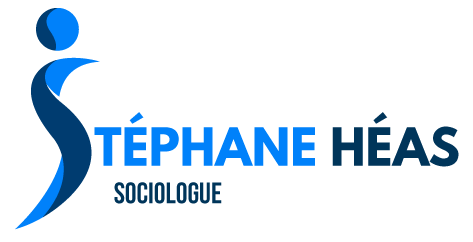
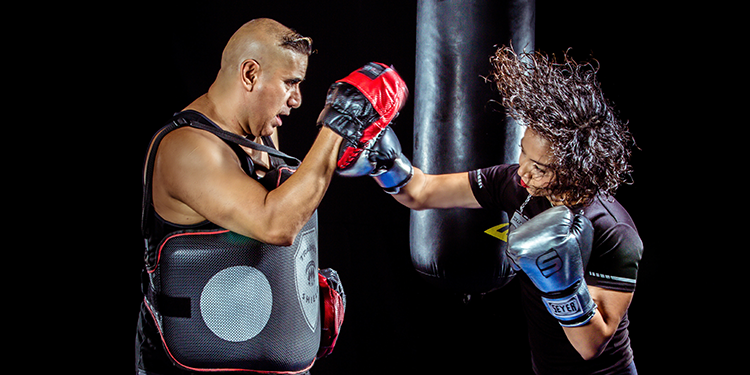

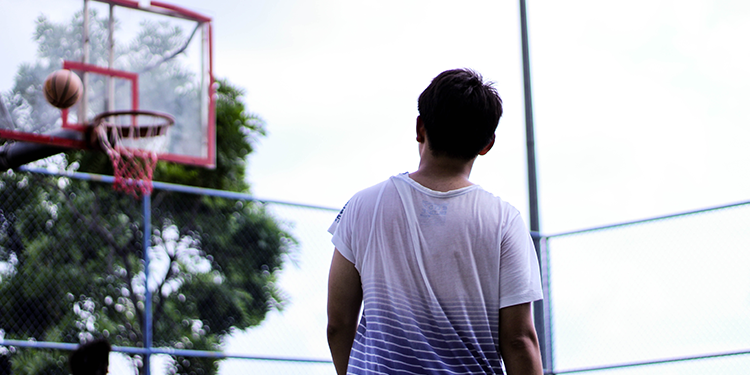
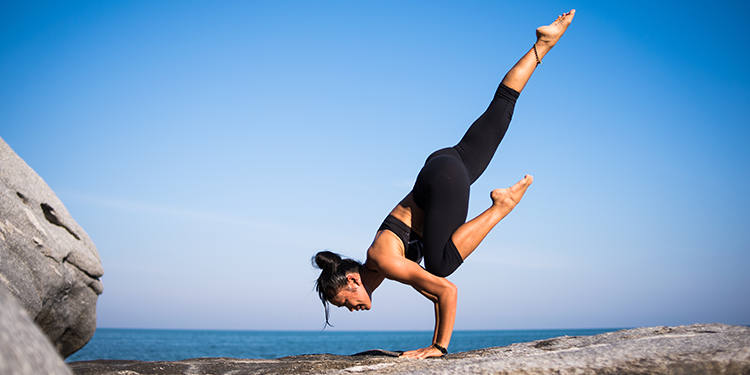

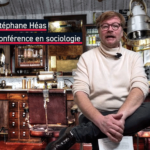


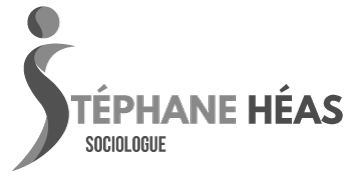
Comments
Leo
Great job on your blog post! The information you shared was both educational and inspiring. I found myself motivated to take action after reading it. […] Read MoreGreat job on your blog post! The information you shared was both educational and inspiring. I found myself motivated to take action after reading it. click here to explore more on this subject. Read Less
Henry
Ready to enter the world of affiliate marketing? click here and discover how to promote products and earn a commission for every sale you generate.
Devid
Are you a skilled programmer? click here and learn how to freelance or create software products that cater to the needs of a specific market.
kamir bouchareb st
gooooooooood
andi
thank you very much for the information
Marie
to andi
Your blog post was a valuable source of information. I appreciated the way you presented the content and the key takeaways you highlighted. To learn […] Read MoreYour blog post was a valuable source of information. I appreciated the way you presented the content and the key takeaways you highlighted. To learn more, click here. Read Less